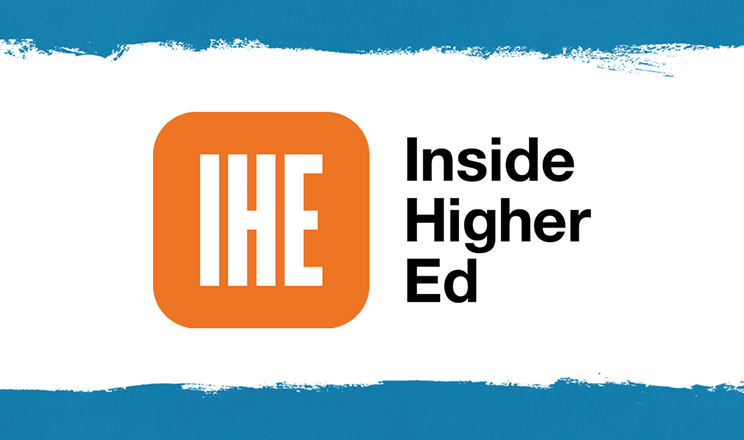
AI in education is no longer an ambiguous “what if.” It has evolved into the more practical questions of “when, where, and how.” WGU Labs has been exploring how AI can transform student support services and where the most value can be leveraged from current generative AI capabilities and tools to transform the student journey. Our latest initiative represents the connection of many of these tools. Based on our research and understanding, we have developed an AI-powered assistant to provide students with 24/7 support across the full spectrum of their needs. This post shares our journey from initial concept through MVP development, the critical pivot we made based on user testing, and what we've learned about building AI systems that truly serve students.
Why We Built Stu
WGU serves over 180,000 students with increasingly diverse needs. While WGU's human-led support system is robust, our research has revealed persistent challenges to utilization that likely mirror those experienced at other institutions. In our most recent survey, students reported being often unsure about the availability of support and sometimes hesitant to ask for help. They struggled to access assistance during critical after-hours moments and had difficulty finding accurate information from the student handbook or resources scattered across the university website and student portal.
At WGU, students are assigned a Program Mentor when they enroll. Their Program Mentor is typically the student’s first point of contact for all sorts of questions they may have throughout their learning journey. While serving as a campus and resource guide takes up a considerable amount of a mentor’s time, this transactional type of support is not where they provide the most value to students. Rather, Program Mentors are uniquely positioned to develop personal connections with their students, and through these connections, provide emotional and motivational support. They often serve as empathetic yet pragmatic accountability partners and trusted academic advisors, guiding students through their programs. Students and research alike underscore the immense impact that this type of transformative support from mentors can have on student success and the overall student experience at WGU.
Many of the mentors we spoke with discussed the time they had to spend on routine inquiries, which limited their ability to provide the type of transformational support that students almost universally cite as a significant factor in their success at WGU. When this transformational support takes a back seat to more transactional interactions, the full value of a mentor’s time and expertise is not leveraged. Our AI-enabled student support system was initially conceived as an intelligent chatbot to address these challenges. We identified five domains as the most critical: academic assistance, social and psychological support, career guidance, student financial aid, and general resource matching.
Multi-Agent Architecture Offered - but Didn’t Deliver an Elegant Solution
The understanding of agentic AI systems has progressed rapidly since we began developing our tool. Our initial approach in late 2024 reflected the prevailing AI development wisdom at that time: creating specialized agents for specific tasks and areas of knowledge, and orchestrating them together with emerging tools like MCP and LangChain. This architecture promised to provide deep specialization in each support area, as well as modularity — a useful feature that allowed us to build the most essential agents first and add others over time.
The original design included five subject matter expert (SME) agents:
- Mental Health and Well-being Agent: Supporting students with their questions about motivation, feeling overwhelmed, or mental health concerns.
- Academic Support Agent: Addressing broader academic needs, like questions about course enrollment, program requirements, and navigating academic policies.
- Financial Aid Agent: Based on extensive feedback, we recognized that financial aid was a significant area of frustration. This agent aimed to provide clear and comprehensive guidance throughout the complex process.
- Career Agent: Designed to engage students throughout their journey, not just at graduation, weaving career exploration into multiple touchpoints along a student’s path.
- General Knowledge Agent: Initially a catch-all for uncategorized questions, we eliminated this after finding that it received too many queries that could actually be handled by one of the other specialized agents.
Above these specialized SMEs sat the main Orchestration Agent — an intake agent that would triage incoming questions to the appropriate specialist. Finally, the Compassionate Coach Agent refined every response, applying what we’ve learned from studying the psychology of student success, belonging, and recognized coaching and mentoring pedagogy, to ensure that every interaction was framed by these important principles.
The Latency and Length Challenge
While architecturally elegant, user testing revealed a critical flaw in our multi-agent orchestration: response times averaged 38 seconds, with many instances taking over 60 seconds. In an era of same-day Amazon deliveries and instant responses from ChatGPT, extended wait times were not part of the user experience we envisioned for students engaging with our system.
Investigating this issue revealed that latency increased with the complexity of routing between agents. Each question required analysis, routing, processing, coaching refinement, and return, with each handoff adding precious seconds.
The latency may have been more acceptable if the conversations had been ideal. We noted the multi-agentic approach also meant the agents would occasionally lose the topic, or even begin the conversation again, with each SME thinking their contribution was the beginning of a new session.
Additionally, some of the SMEs proved to be very talkative. Even after changing the agentic prompts to make the handoffs flow more naturally and keep the agents’ responses brief, they would often reply to student questions with three or four solid paragraphs, with two or three follow-up questions crammed at the end of the response. We didn’t need user testing to realize that students would not want walls of text and lists of questions shot back at them.
The Single-Agent Pivot
By early Summer 2025, developments in large language models presented a new opportunity. Model enhancements expanded context windows that could be handled within a single prompt, allowing us to consolidate more specialized knowledge into a single agent without sacrificing depth.
We rebuilt our multi-agentic system as a single, comprehensive agent, incorporating all subject matter expertise and compassionate coaching elements into a unified agent. This agent would still utilize a Retrieval Augmented Generation (RAG) function to access specialized knowledge bases, but would not require the complicated and time-consuming hand-offs to multiple agents. The results were dramatic: response times dropped to under 4.9 seconds while maintaining response quality, empathy, and the depth of support that we knew the tool should provide. The multi-agent architecture, while conceptually appealing, simply wasn't necessary with the evolved LLM capabilities. This new architecture reflects our current iteration of this system; however, we recognize that the rapidly evolving capabilities of AI and LLMs will likely allow us to reimagine future configurations of the tools.
We are also exploring how our tool can utilize some agentic actors to accomplish tasks on behalf of the user. For example, a student may simply ask the agent, “Set up a call with my mentor ASAP,” which will trigger the agentic actor to initiate the process on its own. The agentic actor will then compare the student’s calendar with their mentor’s calendar and automatically schedule their next check-in call on both calendars. Or the agentic actor may take a student’s complicated question about their transcript and send it to an AI agent in the registrar’s office. This specialized agent might then verify prior enrollment at another institution, validate the credits earned, and update the student’s transcript — all while the student is busy working on an upcoming research paper.
What We Learned from User Testing
We invited approximately 600 students to test our compassionate coach, with 180 actively engaging and 160 providing detailed feedback via a follow-up survey. The insights proved invaluable.
What Students Loved: Fifty-six percent said the tool was "very helpful," praising its comprehensive WGU knowledge and actionable advice. Students particularly appreciated the empathy. One student noted it "felt like chatting with a real individual." The schedule creation feature resonated strongly, as did unexpected capabilities, such as email drafting. Students valued having 24/7 judgment-free support for questions too "silly" for mentors.
Critical Issues: Seventy-five percent identified specific problems. Technical bugs topped the list, including some apparent garbled text, what appeared to be system prompts leaking into messages, and incorrect name usage. These issues, although affecting only a few interactions, could damage trust if they were to occur in a real launch. Students also flagged seemingly incorrect information about exam fees, which, it turns out, the AI actually got right, but this highlights the quick loss of trust that students can develop at the first sign of inconsistency in an AI tool.
The Competition: Perhaps most importantly, many students are already sophisticated AI users, regularly using ChatGPT, Claude, and other AI tools. Any custom tool must be demonstrably better for institution-specific needs through deep system integration and personalized support. It must do more than just provide information — it must provide individualized and well-informed guidance that, for the student, feels like a trusted friend.
Moving Forward
Based on these learnings, our immediate priorities are to eliminate technical bugs and correct factual errors. The next phase focuses on building our tool in a secure AWS environment, which enables a critical connection to real, live student data and adheres to industry-recognized safety and security protocols. When our compassionate AI coach recognizes individual students and understands their academic progress, we believe this will unlock personalized support at scale.
Looking ahead, we envision proactive outreach when risk signals emerge, with the tool sending timely messages to students based on extensive research into the right types of interventions for students in various scenarios. Our compassionate coach will also have direct scheduling integration and seamless handoffs to human support when needed. We're also exploring how the tool can learn from top-performing mentors to scale their best practices.
Another significant challenge we will face is how to handle the support agent’s memory — specifically, how to identify and classify relevant information to remember, how long to retain it, and how to retrieve it in the current context. In some cases, this support agent may need to recall something relevant from weeks or months ago. This puzzle will need to be resolved through technology and will likely be driven by evolving industry standards and development.
The Bigger Picture
Our experience reinforces 2 key principles for product development, especially around emerging educational AI:
- Architectural elegance must yield to user experience. Our theoretically superior multi-agent system proved problematic because it was both too chatty and too slow. Students don't need perfection; they need help that is fast, relevant, and reliable. A true multi-agent approach is not out of the question, and we are still, in fact, utilizing it in some form for a continuous improvement function that will happen outside of live student chats, and therefore won’t contribute to delays in responses. The lesson here is that, regardless of the bells and whistles on the backend, educational AI must provide genuine value to users on the front end. Emerging tools need to go beyond general-purpose use, through deep institutional integration and actionable support.
- The technology is continually improving. It may not pay off in the long run to lock into a particular tool or set of technical components to build a solution like this, because LLMs and their related tools are constantly evolving. What works well today may be archaic in a month, so it is imperative to pay close attention to the latest developments in technology and be willing to try different approaches as they become available.
As we prepare for our large pilot with 1,000 students, we're not just building a chatbot, we're reimagining personalized support in online education. The journey from multi-agent to single-agent architecture taught us to prioritize what works over what's architecturally interesting, keep a close eye on the evolving landscape of generative AI, and keep student needs at the center of every decision.





